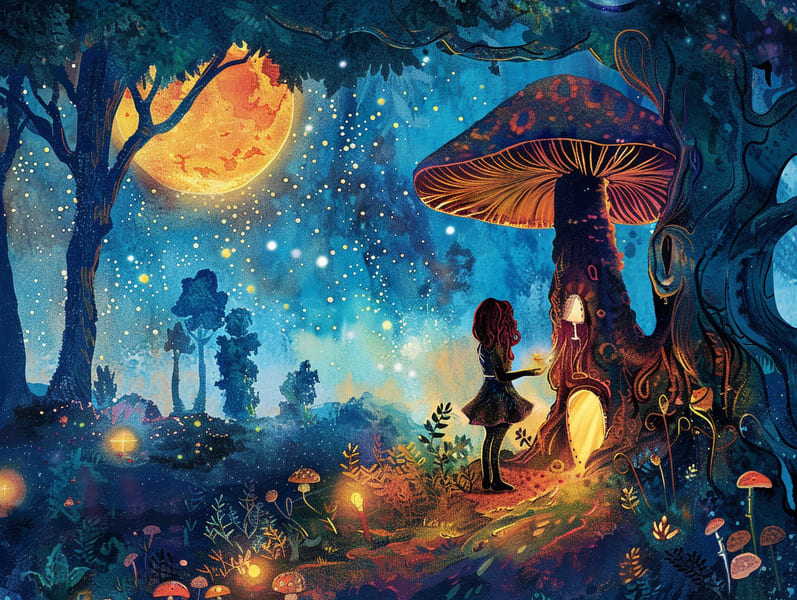The Dawn of Popular Fairy Tales and the Perpetual Captivation.
The Dawn of Popular Fairy Tales and the Perpetual Captivation.
Blog Article

Popular fairy tales have old origins. These tales have been spoken from one generation to the next far before they were ever published. They developed from a variety of civilizations, including European traditions. They were initially conveyed among mature audiences, often carrying themes and messages relevant to the societal norms and beliefs of the time.
The renowned Brothers Grimm, Jacob and Wilhelm, were among the first to assemble many of these beloved narratives. Their published works, "Grimm's Children's Stories," included stories like "The Story of Cinderella," "The Story of Hansel and Gretel," and "Snow White," which have since become classics in the world of traditional fairy tales. Similarly, Hans Andersen's fantastical narratives, such as "The Mermaid's Tale," and "The Story of the Ugly Duckling," have captivated hearts worldwide, cementing their place in the pantheon of treasured fairy tales.
Despite their historical roots, classic fairy tales remain as pertinent as ever, especially as children's night stories. These delightful tales are now available in different formats, including richly illustrated books, whimsical animations, and web-based fairy tales.
Their unwavering allure can be traced to several enchanting factors:
Important Morals: Traditional fairy tales often illustrate important moral lessons. Stories like "The Shepherd Boy and the Wolf" teach the benefit of truthfulness, while "The Hare and the Tortoise" highlight the virtues of persistence and humbleness. These tales offer young ones clear distinctions between right and wrong, shaping their moral compass in a mild yet deep way.
Empathy and Understanding: Traditional fairy tales frequently feature protagonists facing challenges and struggles, motivating listeners to comprehend with their struggles and support their triumphs. For instance, "The Tale of Beauty and the Beast" reveals the virtue of looking past the exterior to acknowledge the inner being of a character, fostering tenderness and perception.
Cultural Awareness: Many timeless fairy tales are interwoven with the cultural contexts from which they grew. Delving into these tales can provide captivating looks into different cultures, fostering a sense of world appreciation and understanding.
Inventiveness and Fantasy: The magical elements in ancient fairy tales—enchanted forests—generate children’s visions. These stories move readers to mythical realms, firing up imaginative thinking and a sense of curiosity that remains a lifetime.
Traditional fairy tales are not only charming but also educational. They provide magical tools in cultivating various thinking and feeling skills in young readers. When classic fairy tales are narrated, they nurture verbal development by bringing new linguistic elements and detailed sentence structures. This practice also advances listening skills and concentration, as little ones stay focused, eager to see what happens next.
Furthermore, debating the themes and characters of traditional fairy tales can enhance thought processes and reasoning skills. Young ones are educated to discover patterns, anticipate outcomes, and figure out cause and effect. These talks also encourage young readers convey their thoughts and feelings, boosting their emotional intelligence.
In today’s technological era, the presence of internet fairy tales has made these tales more within reach than ever. Web-based platforms and mobile apps feature wide arrays of old fairy tales that can be browsed or heard anytime, anywhere. Fairy tales narrated are particularly prevalent, extending an fun way for kids to delight in these entrancing tales. Voice books and read-out-loud stories guide characters and settings to life, often augmented by delightful harmonies and melodies that raise the tale journey.
The unending appeal of traditional fairy tales lies in their ability to modify to contemporary times while preserving their central messages. Contemporary takes of these fairy tales often incorporate more diverse figures and modern settings, making them understandable to today’s audience. However, the underlying themes of fortitude, humanity, and fair play remain unchanged, continuing to resonate with young listeners of all ages.
Timeless fairy tales also offer a sense of warmth and understanding. They feature a organized narrative with a distinct beginning, middle, and end, often wrapping up with the resolution of conflicts and the triumph of morality over wickedness. This constancy can be comforting for young readers, showcasing a sense of solidity in an inconstant world.
Classic fairy tales continue to mesmerize and educate new generations, maintaining their enchantment and applicability in modern society. As children's night stories, they confer a perfect blend of magic and knowledge, nourishing moral values, empathy, and creativity. The accessibility of free fairy tales online and the well-liked nature of fairy tales narrated ensure that these old stories remain accessible to new generations.
By guarding and passing on these tales, we continue to honor the rich tapestry of mythology and cultural heritage. Whether you are enjoying a gorgeously illustrated book, exploring a electronic collection, or listening on more info an audio story, the allure of children's fairy tales is always within reach. These stories show us of the enduring influence of narratives and its ability to draw us together across centuries and lands.
Even if you are experiencing a richly illustrated book, seeing a internet library, or hearing an spoken story, the enchantment of children's fairy tales is always within reach.
These narratives highlight of the persistent magic of tales and its ability to connect us across generations and cultures, establishing a link that charms and informs alike.